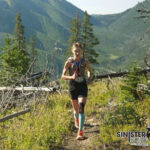Saskatoon is no stranger to extreme cold warnings at this time of year — and with those come cautions about frostbite.
Environment Canada issues extreme cold warnings in much of Saskatchewan when the temperature or windchill is expected to reach -40C or below for at least two hours. In northern Saskatchewan the threshold is -45C. Both are well below -27C, the point at which Environment Canada declares the risk of health effects such as frostbite to increase.
But Shayne Burwell — a runner, triathlete and plastic surgeon based in Saskatoon — says serious frostbite is thankfully very rare in people who are staying active outdoors, even if they’re running outside while Saskatoon is under an extreme cold warning.
“Serious frostbite usually only happens when there is mental impairment (for example drugs or alcohol) and when people get lost in the backcountry and can’t get to warmth or shelter,” he explains. “When people are mentally intact they almost always seek shelter when it gets cold enough.”
This week, Burwell speaks to the Brainsport Times about how to recognize and treat mild frostbite — and how to avoid it altogether.
Q: What’s the difference between mild and serious frostbite?
A: Mild or first-degree frostbite involves the superficial skin. Skin gets pale and chalky in appearance and loses feeling, initially feeling numb. It can get a bit painful when warming up and the superficial layers of the skin will slough off over the next week as it heals.
Intermediate or second-degree frostbite will be similar, but with a larger area initially affected. There is usually quite a bit of swelling and it can be very painful when thawing out. Large clear blisters will form and the area gets swollen. It usually heals up in a couple of weeks.
With serious frostbite (third degree) the tissue will initially be pale, but then get dark blue and blood blisters form. It usually requires prolonged exposure to extreme temperatures to develop. Seeking immediate medical attention is recommended.
Q: Where are runners most likely to experience mild frostbite?
A: Mild superficial frostbite happens on fingers, toes and nose.
Q: If runners do get frostbite, what should they do?
A: Warm water immersion is the best technique for rewarming. Taking some ibuprofen for a couple of days might help a little.
In the event of serious frostbite, immediate medical attention is recommended.
Q: What can runners do to avoid frostbite?
A: Dress appropriately and go at a pace to try not to sweat and get wet.
Run loops close to home or shelter when it’s really cold so you can head inside if you have concerns.
Always run into the wind first to minimize sweating and wetness.
In extreme weather cover your face and use mitts, not gloves.
Dress with a base layer to wick away sweat, then an insulation layer for warmth and then a windproof layer for protection.
Wool socks can help, but make sure extremities aren’t constricted by clothes, which could impair blood flow.
For more cold weather running tips, check out this advice from Saskatoon running coach Jason Warick. You may also want to read through suggestions from former Brainsport employee Colin Federow on what running gear to throw on in frigid temperatures.









